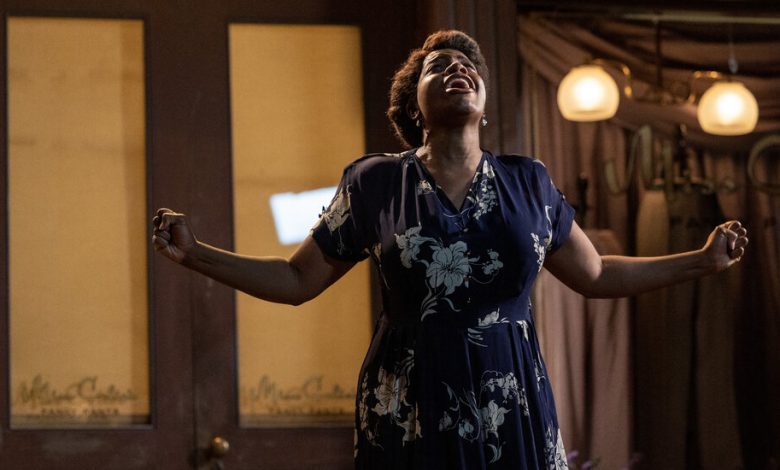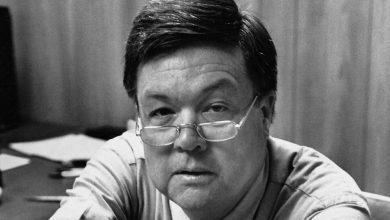The Great Experiment That Is ‘The Color Purple’

Last month, I saw something I hadn’t seen in two decades of moviegoing: three Black-directed films in one week.
I watched Blitz Bazawule’s adaptation of “The Color Purple,” a musical about a female survivor overcoming sexual assault and domestic abuse; the concert film “Renaissance,” directed by and starring Beyoncé; and “Origin,” Ava DuVernay’s dramatization of Isabel Wilkerson’s best-selling book “Caste.” Though each is starkly different in everything from story to aesthetic vision, my happenstance of seeing all three so close together revealed their shared interest in telling stories about African American history in new ways.
Beyoncé remembers the AIDS crisis of the late 1980s; DuVernay recognizes early African American researchers of race relations, like Allison Davis, Elizabeth Stubbs Davis and Alfred L. Bright; and Bazawule looks at a 40-year period in the life of a Black woman living through Jim Crow and the Jazz Age.
That chance week of movies also allowed me to reflect on the unprecedented journey and ultimate cinematic triumph of “The Color Purple.” Starting in rural Georgia in the early 20th century, the story follows Celie, an orphaned girl who is repeatedly violated and twice impregnated by her Pa, a man she considers her father. She is forced to leave her younger sister, Nettie, when Pa marries her off to a much older widow, Albert, whom she knows only as Mister.
Centered on Celie’s finding her voice, discovering her sexuality in her relationship with the blues singer, Shug Avery and journeying to forgiveness, selfhood and community with other women, like her daughter-in-law, Sofia, Walker’s novel earned her the National Book Award and made her the first Black woman to win the Pulitzer Prize for fiction. The movie earned 11 Oscar nominations; then came a Tony Award for the 2005 Broadway show and two for the 2015 revival, making this one of the most prized narratives in American history.
Nowadays, it is hard to believe that when Steven Spielberg released his adaptation in 1985, he and Walker had to cross a picket line of protesters to attend the premiere. But his drama was met with great controversy. While researching my book “In Search of The Color Purple: The Story of an American Masterpiece,” I discovered that many critics, the majority of whom were Black male writers or political leaders, had accused the filmmakers of reinforcing stereotypes of Black men as hyperviolent through the characterizations of Pa, Albert and Harpo (Albert’s oldest son) and the abuse they inflicted on Celie and Sofia. Other critics took umbrage at Celie’s lesbian relationship as undermining traditional Black family values.
Led by Black organizations like the N.A.A.C.P., the Nation of Islam and the now defunct Coalition Against Black Exploitation, the campaign against that movie was bitter and divisive. In turn, its defenders, including many Black women who saw themselves in Walker’s characters, felt pitted against others in their own community. The pushback was so effective that the film won no Academy Awards. (It lost the top Oscar to “Out of Africa.”)
“Without a doubt the controversy is the reason we didn’t take home a single award that night,” Oprah Winfrey, who starred as Sofia in the original and later served as a producer of both the stage and movie musicals, told me in an interview in 2018. “I was puzzled and frustrated by the N.A.A.C.P.”
And yet the film was groundbreaking, changing our understanding of what was possible for Black actors and stories in Hollywood. Ultimately, it paved the way for these new works by Beyoncé, DuVernay and Bazawule. And unlike its predecessor, Bazawule’s musical version, opening in theaters on Christmas Day, premieres alongside other films with predominantly Black casts, and so his “Color Purple” is free to reimagine and experiment with form and conventional musical conceit.
Through Celie’s vivid inner life, the dynamic songs and choreography, and playful cinematic references, this version honors its literary, Broadway and Hollywood forerunners while successfully updating how we see Alice Walker’s characters and, even more surprisingly, innovating how we can experience the movie musical genre itself.
Arriving in a different feminist moment, Bazawule is not bedeviled by the sexist and homophobic concerns that plagued the first movie. And yet, his most memorable scenes subtly take on those past critiques while adding new cinematic layers to Celie’s story. Early in the film, Celie’s active imagination — depicted in the novel through her letter-writing — is shown as both a coping mechanism and a surrealistic narrative detour. When the teenage Celie (Phylicia Pearl Mpasi) discovers that her children are alive after Pa convinced her that they had died, she dreams of avoiding the drudgery of her life.
In the number “She Be Mine,” Celie imagines that she has left Pa’s store and walks through a Southern landscape that is paradoxically lush and marred by the exploitation of Black laborers. As she passes a group of Black men working on a chain gang and Black laundry women washing clothes by a waterfall, we recognize that her escape is limited and illusory and that she is as oppressed in her home as they are in their work.
But when adult Celie (Fantasia Barrino-Taylor) tends to the bodacious blues singer Shug (Taraji P. Henson), her interiority takes over even more. As Shug falls asleep in the bathtub while listening to a record, Celie suddenly imagines a gramophone that’s larger than life, and standing on a spinning vinyl album that doubles as a concert stage, she belts an empowering song.
Later, Bazawule expands his surreal aesthetic when Celie and Shug go to the movies. Sitting in the segregated balcony section as they watch “The Flying Ace,” Richard E. Norman’s 1926 silent with an all-Black cast, Celie imagines them in a different movie — one in color in which they are dressed in ball gowns and singing to each other in front a Duke Ellington-like jazz band. When we return to the present, they kiss, cementing their relationship and finally enabling Celie’s fantasy to come true. In 1985, that kiss was brief and the cause of much public debate. With access to her inner thoughts in 2023, Celie’s hopes and desires become our own: We recognize that her intimacy with Shug is long-awaited and fulfilling.
As Celie finds her voice, rejects the abuse from Albert and gains more and more agency, her flights of fancy seem to disappear. But, by the time we reach the showstopper “Miss Celie’s Pants,” in which she, Shug and other women celebrate Celie’s separation from Albert and her newfound entrepreneurialism, the bold color palette, uplifting music and lively dancing associated with her dreamlike sequences dominate.
Unlike other movie musicals in which the songs distract from the dramatic action, the numbers and the composer Kris Bowers’s score are woven together in a way that makes the soundscape feel like the film’s true setting. This might be because Bazawule was one of several filmmakers who collaborated with Beyoncé on “Black Is King,” the visual companion to the soundtrack for the live-action “Lion King” (2021); he understands how to make an entire film sing rather than string together a series of scenes.
And yet the original song Bazawule co-wrote for the movie, “Workin’,” for Celie’s stepson, Harpo (Corey Hawkins), stands apart for giving this man more multidimensionality than he had in the previous adaptations.
In this scene, Harpo rejects Albert’s authority by building his own house, and it’s a harbinger of his evolution. He goes from being a sensitive young adult to an abusive husband to a man who finally breaks his family’s intergenerational cycle of violence against women. Walker’s novel partly shows this metamorphosis, but Bazawule fully realizes it here, nullifying any lingering controversies about Harpo’s fate or flaws in his representation.
Growth, I suspect, was always the point. It took a while for Winfrey and Scott Sanders to convince their fellow producer Spielberg that the Broadway musical could lead to a new adaptation. “I didn’t really know if ‘Color Purple’had another movie in it,” he told Variety. That Bazawule breathes new life into these characters reminds us of what a masterpiece Celie’s story remains for us today.



